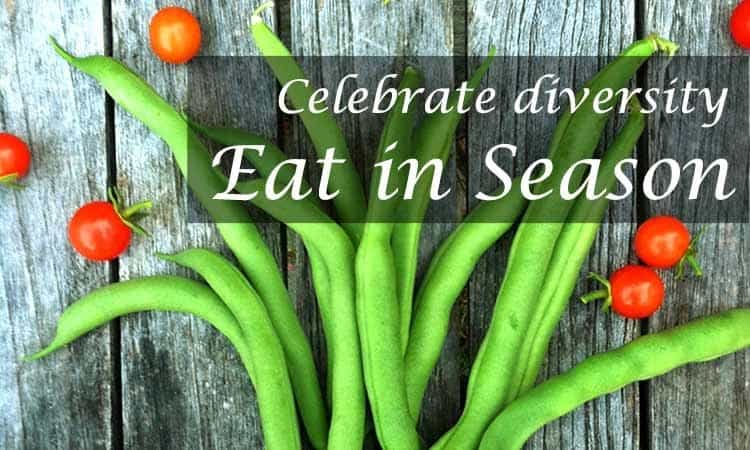In his engrossing new book, The Third Plate, Dan Barber describes how the food system in the United States has become disjointed and dysfunctional: “It operates in silos: vegetables here, animals there, grains somewhere else—each component part separate from the others and unhitched to any kind of culture.”
This compartmentalization has resulted in vast monocultures—the practice of growing one crop in large quantities under industrial conditions—that rely on fossil fuels, encourage animal cruelty, endanger pollinator health, deplete soil fertility, and are susceptible to crop failure in the face of an increasingly unstable climate.
To alleviate these conditions, we must move away from monoculture and instead go about promoting a humane and environmentally-conscious culture of food diversity that connects farming with culture. It is a tall order, but we call all take an initial step to move in the right direction: observe and celebrate seasonality.
Celebrating seasonality requires us to value the importance of diversity in the food system and to recognize how monoculture farming erases this diversity from our diets and the earth. It gives us the opportunity to learn where our food comes from and how it’s produced. At the same time, seasonal awareness allows us to highlight regional variety and tradition as we taste and appreciate the distinctive flavors made possible by seasonal diversity.
When you eat in season, you connect with nature’s rhythms. In spring, nature typically expresses itself with an outpouring of plant growth; summer means long, light-filled days; fall is marked by plants going to seed; and winter typically signals a period of rest. Seasonal farming eating reflects this continuous ebb and flow. A perfect summer peach is so satisfying precisely because it connects us to the concentrated sweetness of warm sunny days. A peach that has flown half way around the world to be eaten in January can’t provide that same sense of satisfaction, especially as it loses nutrients in transit.
Eating with the seasons allows us to experience peak freshness and intense flavor. A decade before organic and local foods were highlighted on menus, Barber had an epiphany when he ate a legendary Sun Crest peach, a varietal grown by Central Valley farmer Mas Masamoto: “It was the best peach of my life, but I have to qualify that, because, like most Americans born in the past fifty years, I didn’t know what a peach should taste like. Breeders in the 1970s and 1980s created new varieties for functionality, not for flavor…”
Eating with the seasons can enhance our food experiences while encouraging us to rotate foods in and out of our diet as nature intended. Years ago, I was a Peace Corps volunteer in Morocco, a country known for its distinctive cuisine that highlights a dazzling array of fruits, vegetables, and grains. One market day, I had an epiphany while gazing upon piles of fresh, unshelled peas arranged in cone-shaped mounds three to four feet high. Accustomed to frozen peas, I hadn’t realized fresh peas had an actual season. No doubt, families all around the region would be dining on peas that night. In fact, you might knock on the doors of ten Moroccan families and nine of them would be feasting on fresh, seasonal, and readily available peas. It struck me that I had never seen such a strong display of seasonality in the United States. Knock on ten doors in the U.S. and it would be pretty unlikely that you’d ever find 10 households eating the same fresh food no matter what the season.
Glenn Roberts, a rare seeds collector, rice breeder, and supplier of specialty grains in South Carolina, reminds us that food is much more than sustenance: it’s culture, too. “Food and cuisine have to be an important part of our culture, and not just something that fuels the culture in one way,” he writes. “Food as fuel is a dangerous concept. That’s where we are right now – food as fuel.”
Reconnecting to the richness of seasonal farming and dining asks us to do just that: emphasize food culture over food as fuel. This won’t be easy in the U.S. where corn is king, and it fuels machines as well as our bodies. Indeed, the amount of corn harvested each year has increased 65% over the last 50 years, and the United States Department of Agriculture (USDA) estimates that 177 million hectares of corn will be harvested this year.
This movement begins with you. After all, celebrating seasonality means celebrating where you live. You don’t have to become a celebrated chef or travel the world to enjoy and celebrate local, seasonal food; you can celebrate in your own backyard. Learn what’s in season in your area and get ready to delve into a cornucopia of seasonal ingredients.













